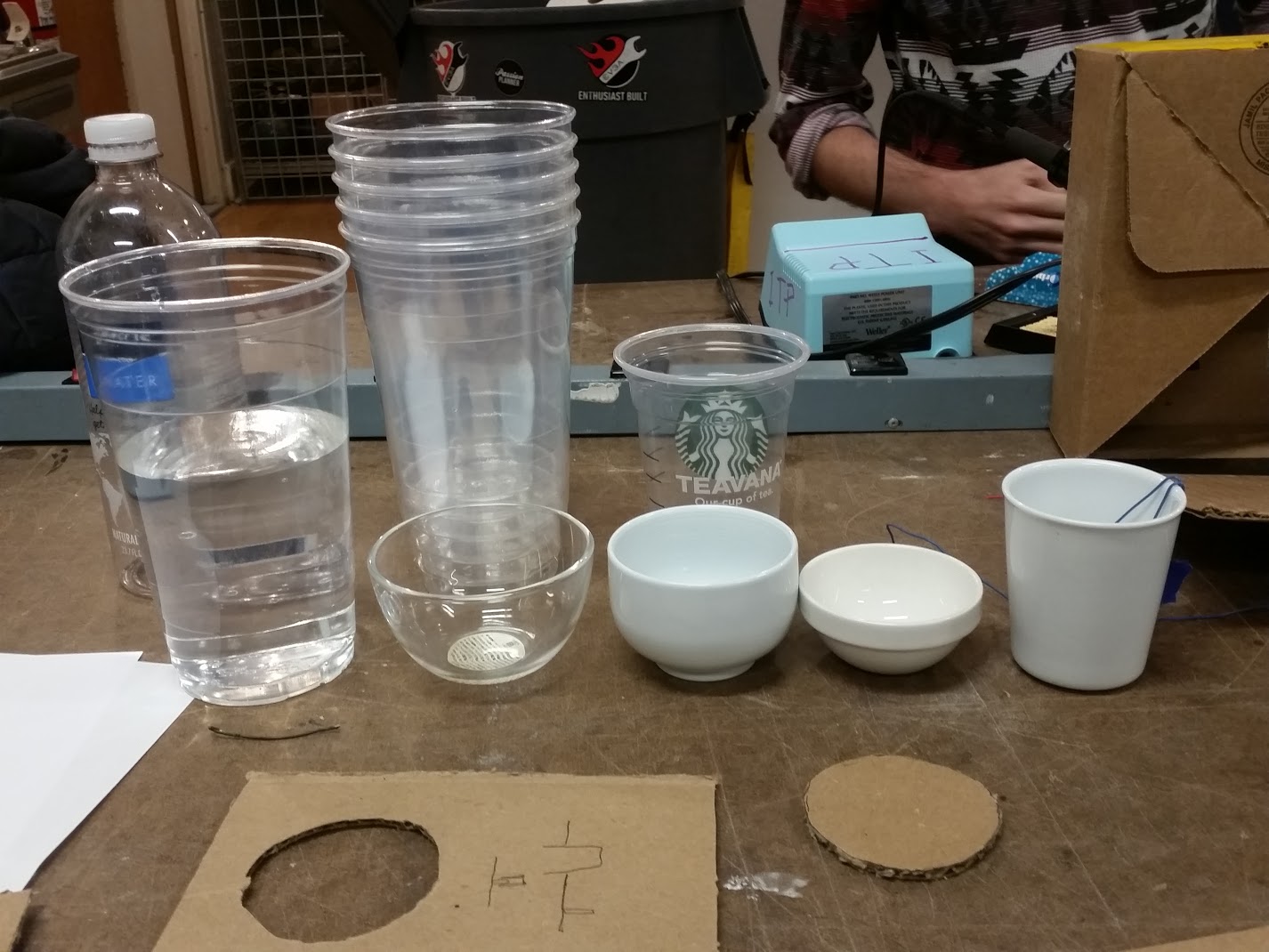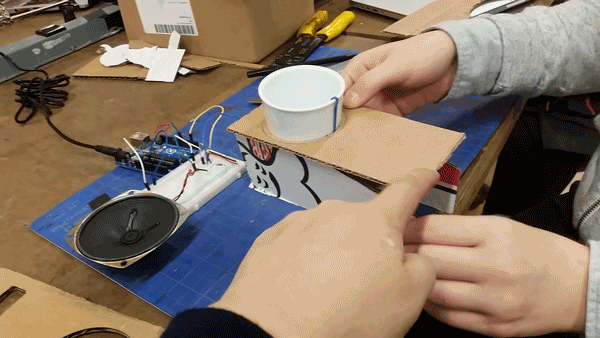Using water to act as switches, Sean and I have been building a water-piano. Building on the physical motif of keys, the water-piano is composed of a series of keys. Each key has two parts: the cup of water and a paddle.
Much of our prototyping focused on the mechanism of pressing the key: finding the right fulcrum point and how the fulcrum interfaced with the key itself.

We looked at different ways to maintain the alignment and stability of the key when it was pressed.


By using the corrugated cardboard, we further simplified the assembly to a single layer of material by aligning the corrugations with the hinge and slipping an 1/8” dowel inbetween the ridges.
